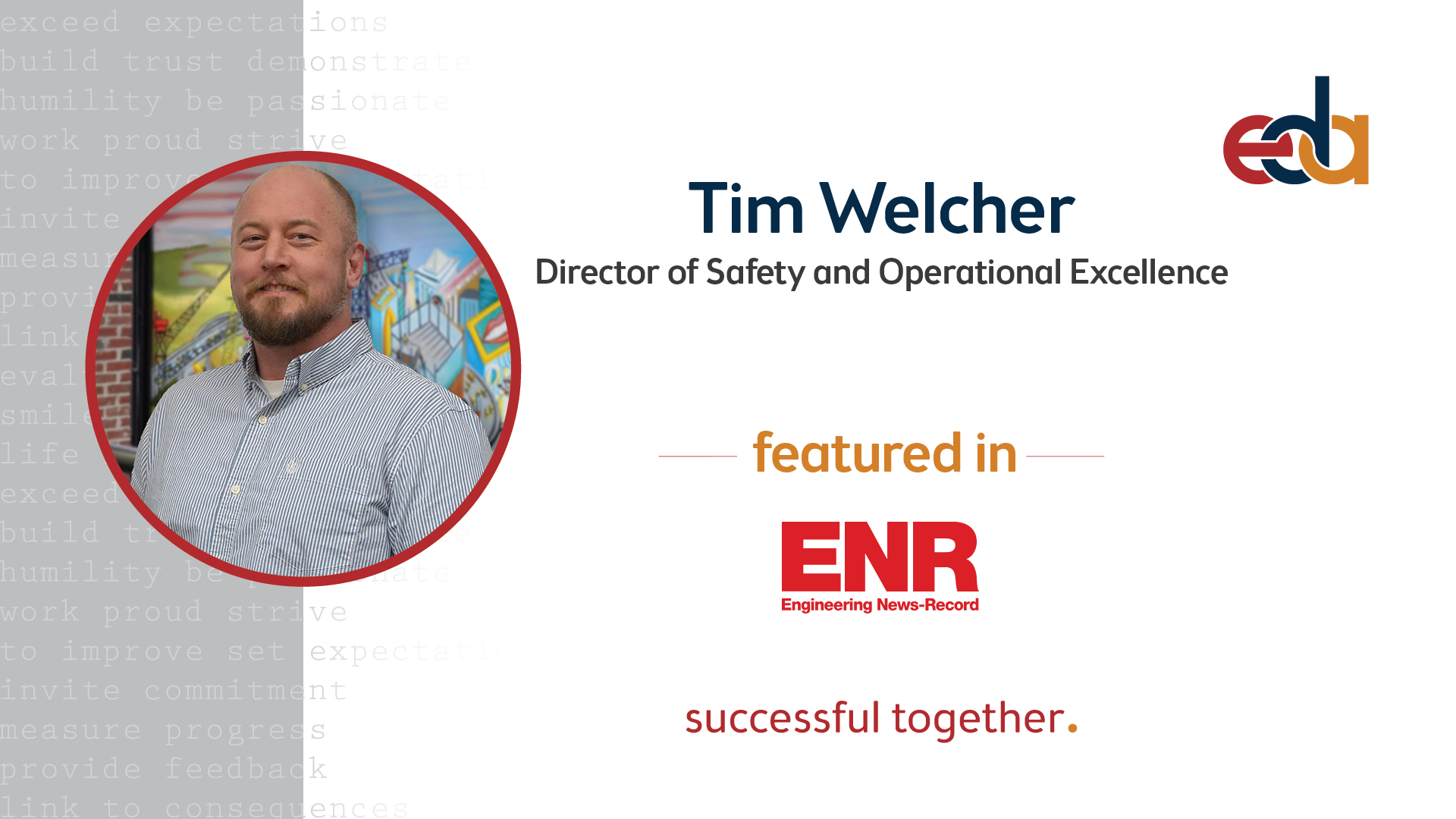Tim Welcher, EDA's Director of Safety and Operational Excellence, was recently interviewed for ENR's Special Section on Safety. In this interview, Welcher discussed the current state of construction safety and strategies for improvement. He highlighted the benefits of utilizing techniques such as root cause analysis and After-Action Reviews. Welcher also emphasized the importance of employee safety training and reviewing safety protocols.
You can learn more about enhancing construction safety by reading the full article in ENR's April publication. The full interview is transcribed below.
Are you doing any special training or education programs? If not led by your company, are you seeing any trends that you intend to adopt or think are unique?
"Our commitment to safety extends beyond compliance; it encompasses a proactive approach where our field crews and safety professionals work together. We believe that well-trained, informed, and engaged employees are our strongest assets in achieving accident-free worksites. In addition to offering traditional trainings like OSHA 30 and NYC SST 62, our safety team has implemented several strategies to improve the ways in which we collaborate with our crews. This includes:
1. Process Improvements and Root Cause Analysis:- Our safety department is dedicated to driving process improvements. We recognize that safety incidents often have underlying causes that extend beyond surface-level observations. Through rigorous root cause analysis, we delve into the factors contributing to incidents. Armed with this knowledge, we educate our crews on preventive measures and empower them to address issues at their source.
- Leveraging insights from my military experience, we have integrated the After-Action Review (AAR) process into our safety practices. AAR involves candidly assessing completed tasks or incidents to identify lessons learned and areas for improvement. By conducting AARs, we foster a culture of continuous learning and adaptability. Our teams actively participate in post-incident discussions, enabling us to refine our safety protocols.
3. Safety Integration into the Last Planner System:
- The Last Planner System, widely used in construction project management, emphasizes collaboration, planning, and execution. We have seamlessly woven safety considerations into this system. Our pre-task planning sessions now prioritize safety measures, ensuring that every crew member understands their role in maintaining a secure work environment."
What are the key issues facing your region pertaining to safety this year? Any increased risks?
"In alignment with OSHA's current emphasis on fall protection, our organization has conducted a thorough review of our internal safety protocols. As part of this initiative, we have enhanced our fall rescue training systems. While the industry commonly emphasizes the use of suspension trauma relief straps to mitigate orthostatic shock risks for suspended workers, we have taken additional measures. Specifically, we have equipped our teams with rescue ladders and winch capabilities, ensuring comprehensive options for the recovery of both conscious and unconscious crew members."
Do you think technology has accelerated safer job sites or caused more disruption? Why?
"Technology has significantly impacted construction safety. Thanks to digital platforms, we now have quick access to training materials and up-to-date OSHA regulations. These resources empower workers and enhance compliance. Beyond software, safety product innovations play a vital role. Cutting-edge gear, wearables, and new tools improve protection on job sites. The research and engineering behind these products are remarkable. While technology adoption may cause initial disruptions, the long-term benefits are immense. As safety stewards, we embrace technology's potential to transform construction sites into even safer environments."
